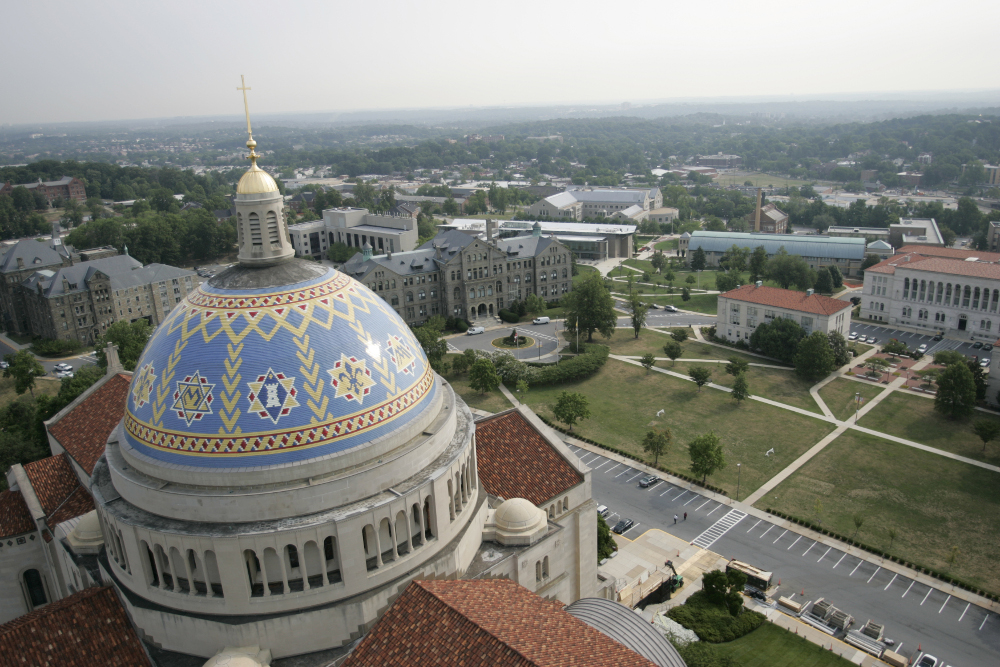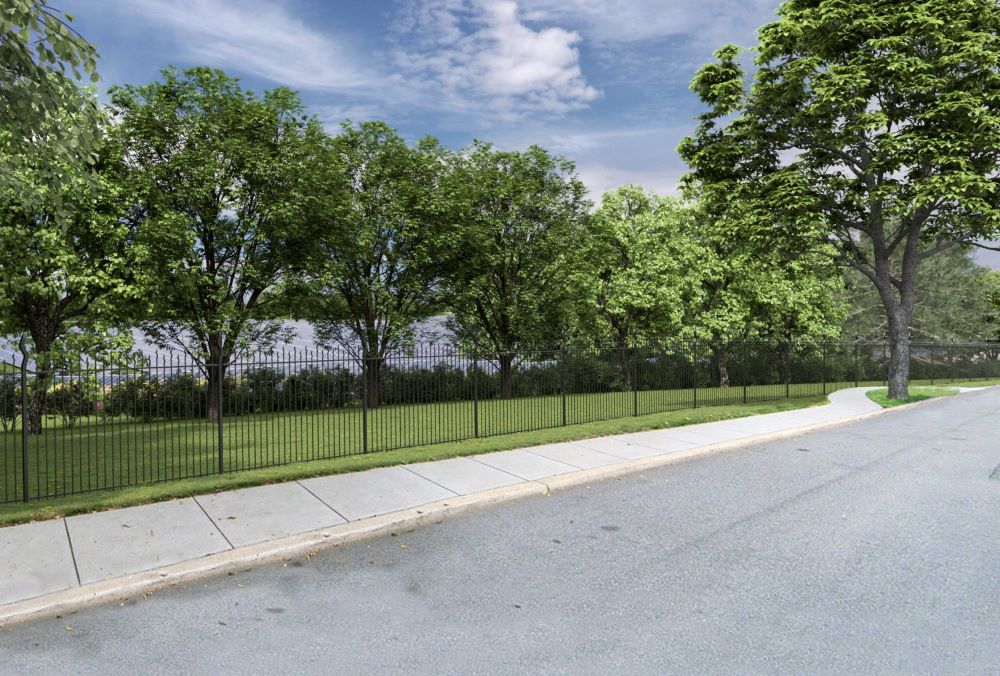
The campus of The Catholic University of America is seen from the bell tower of the Basilica of the National Shrine of the Immaculate Conception in Washington. (CNS/Bob Roller)
The Catholic University of America is celebrating St. Patrick's Day this year with a different kind of "green" energy, announcing plans for what would be the largest urban solar array in the Washington, D.C., area.
The 6-megawatt system is expected to include approximately 15,000 solar panels spread across two arrays, which together will generate an estimated 10,000 megawatt hours annually for the district. The project, in partnership with Maryland-based Standard Solar, is projected to offset roughly 7,000 metric tons of greenhouse gas emissions each year, or the equivalent of removing 1,547 cars from the road, according to the U.S. Environmental Protection Agency's GHG calculator.
Construction on the array, to be located on the university's west campus property, is set to begin in June and completed by spring 2023.
John Garvey, president of CUA, said in a statement that the new solar array "will make a significant addition to Catholic University's long-term commitment to sustainability."
At 6 megawatts, the solar system would surpass the 2-megawatt array installed by Catholic Charities of the Washington Archdiocese. When Catholic Charities flipped the switch in early 2020, that project, completed through the Catholic Energies program of Catholic Climate Covenant, was billed as the largest ground-based array in the D.C. region.
The new CUA system will add to the 2,700 solar panels the school has already installed around campus. The university offsets all its electricity use with renewable energy certificates and reports it has reduced its carbon emissions by 28% since 2016.
Under CUA's five-year sustainability plan, adopted in 2020, the university seeks to reach 20% reductions from its 2016 levels, in its carbon emissions, energy use and water use, and to divert half its waste from landfills.
Switching from fossil fuels to renewable energy for electricity is seen as one of the main areas to combat climate change. The burning of fossil fuels and the subsequent release of heat-trapping greenhouse gas emissions into the atmosphere is the primary driver of accelerating temperatures that is leading to climate change.
CUA said its new solar array will contribute to Washington's goal to generate 100% of its energy from renewable sources by 2032 and to achieve carbon neutrality by 2050.

A rendering of the 15,000-solar panel array to be constructed at Catholic University of America (Courtesy of Standard Solar)
The latest solar project will also feed into the school's commitments under the Vatican's Laudato Si' Action Platform, which CUA joined in November when enrollment officially opened.
The ambitious initiative, backed by Pope Francis and led by the Dicastery for Promoting Integral Human Development, seeks to mobilize all Catholic institutions around the world to embark on seven-year journeys toward "total sustainability" in the spirit of integral ecology that Francis outlined in his 2015 encyclical "Laudato Si', on Care for Our Common Home."
Among the seven sets of Laudato Si' goals outlined is "Response to the Cry of the Earth," which lists steps such as becoming carbon neutral by adopting the use of more renewable energy and phasing out the use of fossil fuels.
"The clean energy generated through this program will contribute as well to the district's goals for a healthy community and to the Vatican's own initiative aimed at global sustainability," said Garvey, one of 80 presidents of Catholic universities worldwide to sign letters of intent stating their commitment to the Laudato Si' Action Platform.
Advertisement
In addition to solar power, CUA has installed electric vehicle charging stations and taken energy-efficiency measures, such as replacing a century-old steam system with one that uses hot and chilled water. Four of its buildings are LEED-certified, including Opus Hall and Maloney Hall, and several also house green roofs. In addition, the school has incorporated upwards of 150 courses that touch on sustainability.
Around Earth Day (April 22), CUA will host a conference titled "Climate Change and the Future of Work," which feature David Turk, deputy secretary of the U.S. Department of Energy, and an address by Cardinal Wilton Gregory of the Washington Archdiocese.








